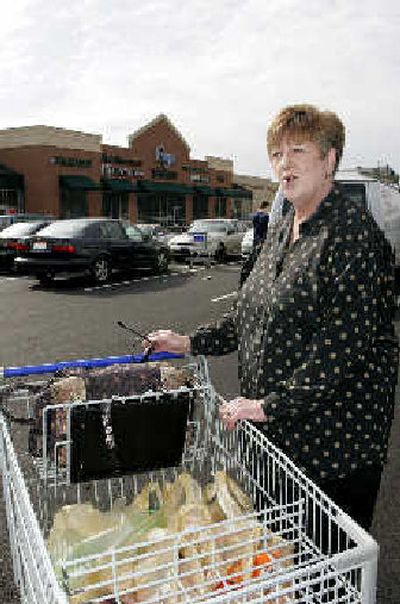Grocery aisles go upscale

CINCINNATI — The days of gasoline price wars aren’t over. They’ve moved from service stations to grocery stores.
“Ten cents is 10 cents. It adds up,” said Vikki Weisbrod, a nurse in suburban Fairfield, Ohio, who often saves $2 on a fill-up of her minivan through a Kroger Co. discount of 10 cents per gallon for frequent shoppers. “It’s convenient, so why not take advantage of a chance to save some money on gas?”
Most of Kroger’s competitors in Ohio markets — such as Giant Eagle, bigg’s, Meijer and Wal-Mart — also have offered gasoline promotions. The gas discounts, usually tied to total shopping purchases or use of loyalty cards, vary in different markets.
The fuel promotions are one of the latest forms of competition in the grocery industry, where traditional grocery chains led by Kroger battle Wal-Mart Stores Inc., Costco Wholesale Corp. and other big-box discounters on one side, and upscale specialty food stores such as Wild Oats Inc., Trader Joe’s Inc. and Whole Foods Inc. on the other.
Wal-Mart took less than 15 years to become the nation’s largest grocer since its aggressive entry into the grocery business in 1988, and rival Target Corp. has complicated matters with its own aggressive expansion of grocery aisles.
“It’s not a simple business,” said Jason Whitmer, food retailers research analyst at FTN Midwest Research of Cleveland. “It’s not just putting discounts in the weekly circular or giving double coupons.”
Kroger — still the country’s largest grocery chain, with more than 2,500 stores under banners including Fred Meyer, Fry’s, Smith’s and Ralphs — has rolled out a variety of weapons to battle its multifront competition.
It launched a rewards MasterCard, which awards points for purchases that build up to gift certificates, and expanded use of its customer loyalty card for promotions.
Some Kroger stores have also added bargain-priced nongrocery items such as televisions, deck furniture or toys, meant to make store visits “like a treasure hunt,” said spokesman Gary Rhodes.
The chain has also expanded to compete with both superstores and specialty grocers. It opened two dozen “Marketplace” stores nearly double the size of its typical stores, selling expanded food offerings and nongrocery goods such as furniture, office supplies, kitchenware and fine jewelry. And it is competing with the specialty food stores with about two dozen Fresh Fare markets, mainly in California, offering natural and gourmet food; and has added no-frills, low-price warehouse stores, called Food 4 Less, in some markets.
“Kroger has been able to experiment more with alternative formats,” said Whitmer, whose company has a “buy” rating on Kroger stock. “They’re definitely ahead of other companies … in becoming more relevant to a broader customer base.”
Pleasanton, Calif.-based Safeway Inc. is in the midst of a makeover, in which the nation’s third-largest supermarket chain is remodeling hundreds of stores to give itself a more upscale look. Second-ranked Boise, Idaho-based Albertson’s has tried lower prices on high-volume items, opening Extreme Inc. discount stores and slashing costs, but the struggling company has put itself on the market.
Meanwhile, Jacksonville, Fla.-based Winn-Dixie Stores Inc. is trying to emerge from Chapter 11 bankruptcy filed this year, and Indianapolis-based Marsh Supermarkets Inc. said Tuesday it would consider a sale of the company, after a weak earnings report.
Kroger reported second-quarter net earnings of $196.5 million, up from $142.4 million the previous year, with sales rising 6.8 percent to $13.9 billion. The company, which also operates hundreds of convenience stores, jewelry stores and fuel centers, will report third-quarter earnings Dec. 6.